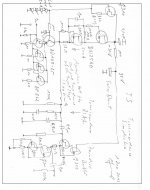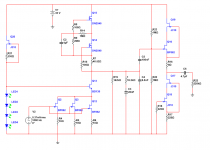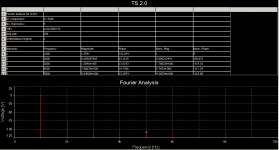Hi Frans
Like your mention to Keith Laumer
maybe we need to call for Magnus: https://www.google.pt/search?hl=pt-...2_DJPS4QSRhIGYBA&q=magnus robot fighter&tbo=d?
No i'm more of a 'AE Vogt'-man 🙂
PS: Outstanding speakers.... better than Apogee ?
Yes! Yes! Yes! Yes! Yes! For sure 🙂 I have listened a lot to Apogee, and I think they are more 'tiresome' to listen to, but why not come and listen for yourself 🙂
Here is some good information about depletion mosfet CCSs.http://www.waltjung.org/PDFs/Sources_101_Letter_Revisit_0409.pdf
I watched that Forbin film yesterday night, pretty cool.
i also like Fasbenders "Welt am Draht"
Cool CCSs
Must find this film World On A Wire | Trailer | Criterion Collection #598 | Blu-ray & DVD - YouTube
The Fassbinder Foundation has hidden that film the last 40 years but now it is available.
One of the first films about Transhumanism. " What will happen to mankind".
A concept more thought out by Kurzweil, the guy that made the synthesizers for Stevie Wonder. I am a Singulasist too, the merge of computer and human.
One of the first films about Transhumanism. " What will happen to mankind".
A concept more thought out by Kurzweil, the guy that made the synthesizers for Stevie Wonder. I am a Singulasist too, the merge of computer and human.
Last edited:
That CCS i use in my tube RIAA on top of a self conducting tube cascode, Ulf, are you getting the idea ?
I like AE van vogt a lot also 🙂No i'm more of a 'AE Vogt'-man 🙂
Yes! Yes! Yes! Yes! Yes! For sure 🙂 I have listened a lot to Apogee, and I think they are more 'tiresome' to listen to, but why not come and listen for yourself 🙂
Thank you so much for the invitation.... I will not loose this opportunity

I am a Singulasist too, the merge of computer and human.
You must see this one: IMMORTEL AD VITAM (Made in France By Enki Bilal) - YouTube
Here is a more detailed schematic of the TS ( Transimpedance Simplistic ).
I have substituted the BJT Cacode CCS with a depletion mosfet CCS.
The RIAA values are valid under the asumplition that the output impedance of the input stage is infinite. That is not the case so it apears in parallel to the RIAA. That may likely truncate the bass response with the chosen values. The solution is to raise the bass resistor or make the RIAA lower impedance. That will reduce the gain though. Anyone willing to simulate this circuit ?
The drawing has to be turned left-
I have substituted the BJT Cacode CCS with a depletion mosfet CCS.
The RIAA values are valid under the asumplition that the output impedance of the input stage is infinite. That is not the case so it apears in parallel to the RIAA. That may likely truncate the bass response with the chosen values. The solution is to raise the bass resistor or make the RIAA lower impedance. That will reduce the gain though. Anyone willing to simulate this circuit ?
The drawing has to be turned left-
Attachments
Hi there JG,
SY uses dn2540 as CCS in his phono stage posted here at diyaudio. What do
you mean with "self conducting" ? And yes i know what a cascode ist ;-)
By the way - what tubes are u using in your tube-RIAA ?
Greetings Ulf
That CCS i use in my tube RIAA on top of a self conducting tube cascode, Ulf, are you getting the idea ?
SY uses dn2540 as CCS in his phono stage posted here at diyaudio. What do
you mean with "self conducting" ? And yes i know what a cascode ist ;-)
By the way - what tubes are u using in your tube-RIAA ?
Greetings Ulf
Ulf, you drive me cazy 🙂
If you are really interested in the tube RIAA all the information you require is in this thread. I simply can not repeat everthing for everybody all the time. I have to drink, to eat and sometimes to sleep.
Self conducting Fets also known as depletion Fets conduct when you connect the gate to the source. They do not require external bias like BJts or enhancement Fets.
The value that you then measure is the IDss. Tubes are the same. A self conducting depletion mosfet cascode is a series connection of two Fets. You can do that with tubes too. The CCS post 7810 is that way with a twist of a bias multiplier.
The Rosenblitz Trancendent Phono has a self conducting tube cascode as i have in my Tube Phono.
You can of cause build a cascode with fixed bias, that is the usual way.
If you are really interested in the tube RIAA all the information you require is in this thread. I simply can not repeat everthing for everybody all the time. I have to drink, to eat and sometimes to sleep.
Self conducting Fets also known as depletion Fets conduct when you connect the gate to the source. They do not require external bias like BJts or enhancement Fets.
The value that you then measure is the IDss. Tubes are the same. A self conducting depletion mosfet cascode is a series connection of two Fets. You can do that with tubes too. The CCS post 7810 is that way with a twist of a bias multiplier.
The Rosenblitz Trancendent Phono has a self conducting tube cascode as i have in my Tube Phono.
You can of cause build a cascode with fixed bias, that is the usual way.
I like the TS... Not so sure about the buffer... Can TS be terminated with the "stock" k170 + 1500Rs from the simplistic ?
Hi Joachim,
I'm back for holidays and always ready to sim something simple.
and always ready to sim something simple.
Here is a plot of TS input stage's output impedance. With such a sky high impedance and lots of gain, my biggest concern would be dc stability. Setting real circuit for operating point would be close to impossible I'm afraid. How a tempco of DN2540 looks like ? Will check riaa values, but I guess they will be spot on 😉
I'm back for holidays
 and always ready to sim something simple.
and always ready to sim something simple. Here is a plot of TS input stage's output impedance. With such a sky high impedance and lots of gain, my biggest concern would be dc stability. Setting real circuit for operating point would be close to impossible I'm afraid. How a tempco of DN2540 looks like ? Will check riaa values, but I guess they will be spot on 😉
Attachments
Hi Sampler
Can you post a file with the values you got in your sim ?
I need to find input stage output imp at 1kHz
Does your sim give the output imp with the riaa filter connected ?
Can you plot this impedance without the riaa filter connected ?
Can you post a file with the values you got in your sim ?
I need to find input stage output imp at 1kHz
Does your sim give the output imp with the riaa filter connected ?
Can you plot this impedance without the riaa filter connected ?
Yes, Ricardo, you can use the simpler buffer from the Simplistic ( in Germany we call that word worm ).
Sampler, i use more or less the same input structure in my tube RIAA and it works.
For Ulf, i will show you the Transcendent RIAA. The input tubes in mine are aranged the same way.
Sampler, i use more or less the same input structure in my tube RIAA and it works.
For Ulf, i will show you the Transcendent RIAA. The input tubes in mine are aranged the same way.
Ok, here is what my simulator spitted out. Gain is 57dB and good riaa compliance with increased shunting resistor from 130k to 142k. Typical nice SE harmonic distribution for 1Vrms out with H2 dominant. There was missing bias resistor for buffer, added that.






